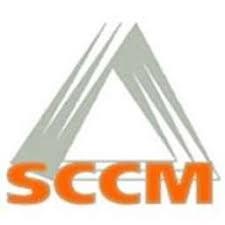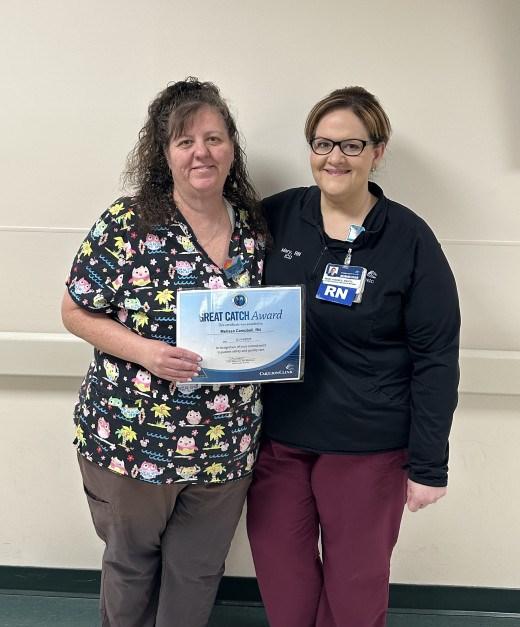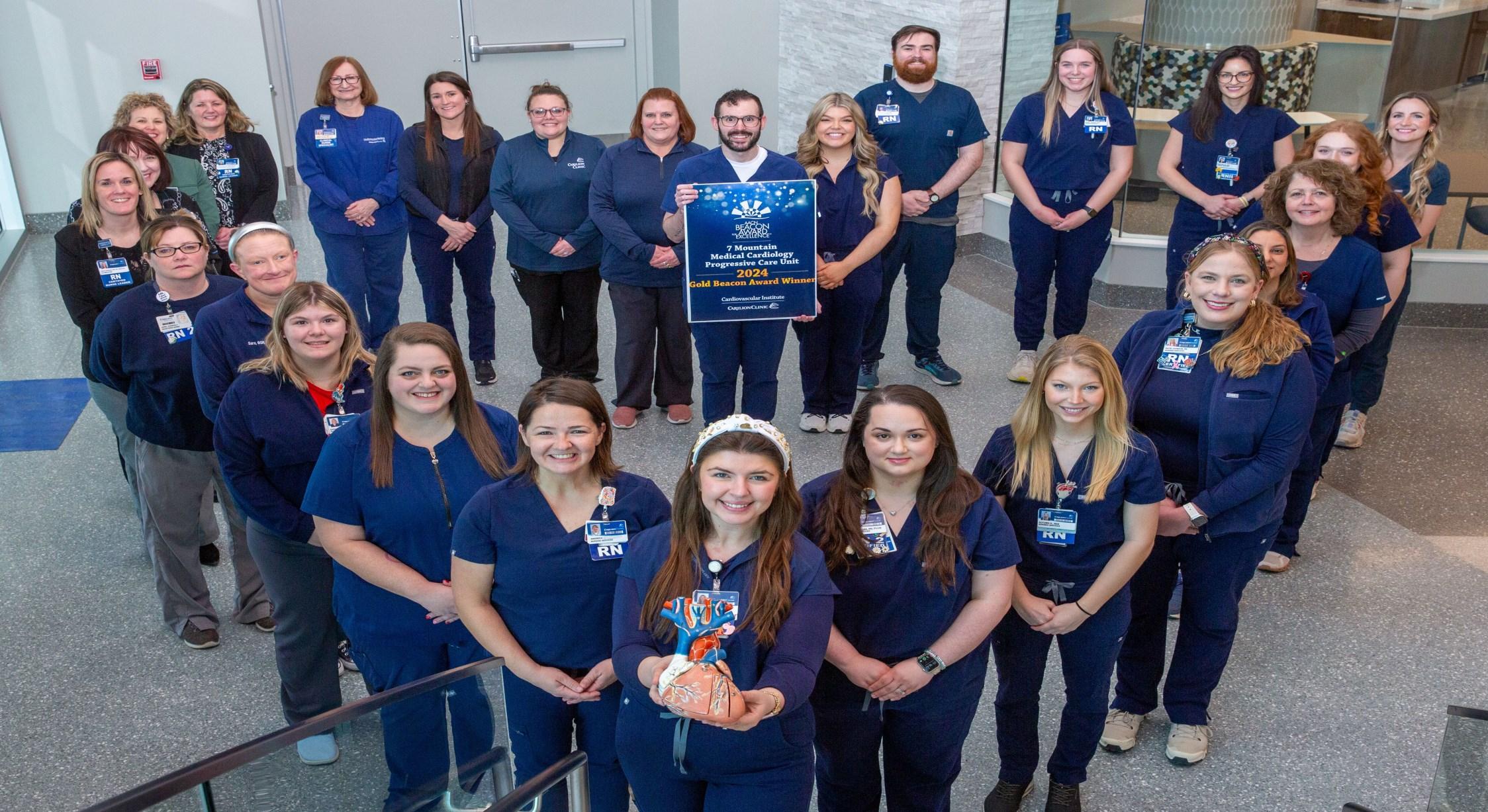Welcome to the Spring 2025 edition of Within REACH. Spring is a time of renewal and growth. Our outdoor environment explodes in color with the budding of the trees and the blooming flowers. The days are longer, and we are shaking off the cold and greyness of winter. At this time of year, you may feel new energy and inspiration, presenting an excellent opportunity to flex your creativity and writing skills. Consider taking advantage of this time and contemplate submitting a story for Within REACH!
Within REACH submissions are accepted on a rolling basis and we accept stories and articles related to article critiques, human interest stories, literature reviews, evidence analysis, research, quality improvement, and proposed state or national legislation. Essentially, any story that aligns with our REACH professional model of practice is appropriate for peer review and publication. We would especially like to hear from those of you who have a potential Magnet story for our next Magnet application! We want to keep the energy going and share in all of the good work you do for your patients and colleagues. By publishing in Within REACH, we have a recorded source of studies with outcomes and contact information.
CarilionNursingResearchEditorialBoard: Chris Fish-Huson, PhD, RN, CNE - Editor-in-Chief
Reviewers
Nancy Altice, DNP, RN, CCNS, ACNSBC
Desiree Beasley, MSN, RN, CCNS, CCRN
Sarah Browning, DNP, RN-BC
Charles Bullins, DNP, RN, AGACNPBC
Sarah Dooley, MPH, BSN, RN
Troy Evans, MSN, RN, CCRN, NHDPBC, NEA-BC
Cindy W. Hodges, MSN, RN-BC, FCN
James Ingrassia, MSN, RN
Lauren Miley, BSN, RN, PCCN
Laura Reiter, DNP, RN, CCRN, CNRN
Cindy Ward, DNP, APRN-CNS, RN-BC, CMSRN, ACNS-BC
Sepsis is an all too common, impactful, and potentially deadly occurrence in which the body reacts to an infectious source. In many patients, the infection that leads to sepsis bypasses the body’s immune system defense capabilities and leads to the damage of multiple essential body systems. This phenomenon is much too frequent in healthcare settings and requires preventative measures and quick intervention to provide optimal patient outcomes that sustain healthy lives (Evans et al., 2021).
Senator Chuck Schumer, the Senate’s Democratic leader, in conjunction with Senators Susan Collins and Robert Casey, proposed legislation in September that aims to increase sepsis awareness and provide sufficient care to patients suffering from sepsis in order to improve patient education and outcomes. These senators were able to recognize the shortcomings of our current processes and assist in providing additional efforts and measures that would help to tackle the issue of sepsis. The proposed legislation is Bill S.5026 and is referred to as the SEPSIS ACT, which stands for Securing Enhanced Programs, Systems, and Initiatives for Sepsis (Zick, 2024). “New efforts would include an education campaign about addressing sepsis in hospitals, improving pediatric sepsis data collection, sharing information with the Department of Health and Human Services on data collection, including the Centers for Medicare & Medicaid Services on sepsis quality measures, and the development and implementation of a sepsis outcome measure (SenatorsIntroducetheSEPSISAct , 2024, para. 1).”
This legislation was proposed in September of 2024 and remains in the process of approval. The last legal action related to this proposed legislation was it being referred to the Committee on Health, Education, Labor, and Pensions
The proposed bill itself provides a wealth of knowledge on how impactful sepsis can be. The bill references astounding numbers related to those affected by sepsis which include 1,700,000 patients developing sepsis each year in our nation, with 350,000 patient deaths annually. Additionally, Continued on next page
4
the financial impact of sepsis is a huge burden “compounded by frequent hospital re-admissions, including 1 in 5 patient re-admissions within 30 days of discharge and 1 in 3 patient re-admissions within 180 days of discharge (Schumer, 2024, para. 2).” These statistics are unacceptable, and the SEPSIS Act legislation may impact these outcomes.
The proposed bill provides several guidelines which are outlined to accomplish the goal of sepsis education and improvement throughout the nation. It leans significantly on the Centers for Disease Control and Prevention to improve their sepsis practices for the good of healthcare communities. Some of the outlined requirements are for the Centers for Disease Control and Prevention to create educational experiences for the best sepsis practices and protocols, to increase pediatric sepsis data collection, collaboration with the Centers for Medicare and Medicaid Services on sepsis expectations, and to develop appropriate outcome measures for dissemination related to sepsis (Schumer, 2024).
After a significant amount of research, it appears that there is not much in the way of current legislation related to sepsis. The SEPSIS Act along with the Sepsis Harm and Cost Reduction Act are two of the only available, in progress legislative actions related to sepsis that seemed to be available. Despite the lack of available current law related to sepsis, there are several groups whose purpose and mission is to improve the quality of patient care related to sepsis, provide sepsis education, and decrease the morbidity and mortality related to the sepsis diagnosis. Groups such as End Sepsis, The Sepsis Alliance, and the World Health Organization are all stakeholders in the fight against sepsis.
As evidenced by the lack of law related to sepsis care and requirements, the SEPSIS Act has the potential to have a huge impact on nursing and healthcare. This proposed legislation would allow healthcare providers the ability to play an active role in saving lives through the early recognition and treatment of sepsis in patients throughout the nation. It would provide identification of best practices and protocols related to sepsis as well as aid in treating minority groups, such as pediatrics, in the most thorough and beneficial way. Healthcare organizations would also sustain a huge impact
through a bill such as the SEPSIS Act. There are two very large areas for healthcare organizations that could be affected when it comes to sepsis law. Most importantly, patient care, mortality, and well -being would be greatly affected by such a law. Additionally financial implications would be significant as well. Decreasing the financial burden of healthcare not only contributes to the well-being of the patients but allows healthcare facilities to further fund hospital related care and improvements.
In conclusion, sepsis is a popular topic of conversation in relation to legislation and healthcare. Hospitals and politicians alike are increasingly recognizing the importance of this topic and the attention that is needed to provide improvements. The SEPSIS Act would be one step in the right direction to attack the diagnosis of sepsis head on and improve the lives of individuals throughout the nation.
Works Cited
Evans, L., Rhodes, A., Alhazzani, W., Antonelli, M., Coopersmith, C., French, C., Machado, F., Mcintyre, L., Ostermann, M., Prescott, H., Schorr, C., Simpson, S., Wiersinga, W., Alshamsi, F., Angus, D., Arabi, Y., Azevedo, L., Beale, R., Beilman, G., Levy, M. (2021). Surviving Sepsis Campaign: International Guidelines for Management of Sepsis and Septic Shock 2021. CriticalCareMedicine , 49(11), e1063–e1143. https://doi.org/10.1097/ccm.0000000000005337
Schumer, C. (2024). S.5026- SEPSISAct . Congress.gov. https://www.congress.gov/bill/118thcongress/senate-bill/5026/text
SenatorsintroducetheSEPSISAct . (2024, September). American Hospital Association. https:// www.aha.org/news/headline/2024-09-12-senators-introduce-sepsis-act
Zick, M. (2024, October). SEPSISBillintroducedinUSSenate GlobalSepsisAlliance . Global Sepsis Alliance. https://globalsepsisalliance.org/news/2024/10/4/sepsis-bill-introduced-in-us-senate
Our very own Ellen Harvey has been appointed to serve as a member of the FCCS Program Committee. The appointment is for a three-year term (2025—2028) starting with the 2025 Congress and concluding before the 2028 Congress.
The committee’s charge is: Develops adult program content using a variety of learning modalities to provide basic critical care training to non-critical care specialists prior to the patient’s transfer to an ICU or until the arrival of a critical care specialist.
Ellen Harvey DNP, RN, ACNS-BC, CCRN, TCRN, SCRN, FCCM was inducted as a fellow in the Clinical Nurse Specialist Institute at the NACNS conference March 11.
This is a highly prestigious honor and only awarded to those members of the National Association of Clinical Nurse Specialists (NACNS) who epitomize the excellence of Clinical Nurse Specialist as leaders of the nursing profession, staunch advocates for patients and families, and forerunners of innovations to improve the health of populations.
The press release can be found here: https://nacns.org/2024/12/clinical-nursespecialist-institute-announces-2025-class-of-fellows/ Congrats Ellen!
ELLEN Harvey CNSI Fellow
South Carolina congresswoman Nancy Mace submitted the Standing with Moms Act for proposal on January 23, 2025, to the Committee on Energy and Commerce. This will be the second time that the Standing with Moms Act has been introduced, the last time being in 2023. Standing with Moms Act is a pro-life bill that will create a website known as Life.org. This website will act as a resource hub for mothers and pregnant women within the United States to have access to a variety of resources and education in one location. Another aspect of the proposed bill is that Medicaid coverage would be extended to last up to 12 months past pregnancy for the mother. By extending this resource, mothers would be able to obtain health resources that aren’t typically available once they move into the postpartum stage. This would be a huge resource as it would aid in preventing complications post-partum and improve maternal and child health outcomes.
The proposed website would provide private, local, state and federal resources for various topics such as mental health counseling (pre- and post-partum), financial assistance, legal support, addiction recovery support, health services for expectant mothers, pro-life resources and education on child development. The financial assistance hub would aim to provide information on financial resources for childcare, affordable housing, nutrition and education. Additional resources that would also be available would be counseling for intimate partner violence, rape, and unexpected loss of a child, such as Intrauterine Fetal Demise (IUFD) or Sudden Infant Death Syndrome (SIDS). In addition to all the listed resources, legal support would also be included. This would address resources to assist with custody issues, obtaining aid for child support and adoption since the bill is developed off of a pro-life stance. The proposed bill will also provide counseling pertaining to alternative options for abortion. With the overturn of Roe vs. Wade, this resource will inform mothers of their available options and aid in setting up support for adoption if desired.
Continued on next page
The bill also will aim at offering counseling support options for family members impacted by abortion and abortion survivors. The most significant pro to the proposed website is that it would offer multilingual support, so a diverse population would have access to these resources.
There currently is not a centralized resource hub such as this available to mothers and pregnant women. This proposed bill would greatly impact women's health as it would reach multiple demographics and populations, reaching vulnerable and underserved populations. In the current age of technology, having this website will greatly change the way that resources and knowledge are obtained and shared. By establishing a public website that acts as a central hub for maternity based information and education, pregnant moms will be able to further their knowledge base and find resources that are needed or that they may not have known that they have access to. This will allow a vulnerable population to become more empowered. By these women furthering their knowledge, they will become better equipped to care for themselves and their children from pregnancy throughout motherhood.
The Standing with Moms Act will positively impact health care by allowing mothers to easily access information and resources that will allow them to make informed decisions pertaining to their care, become an active participant in their care and have access to essential services that will aid in the pre and postpartum phase of motherhood. From a healthcare provider perspective, the proposed bill will hopefully improve the overall health and wellbeing of this patient population and reduce potential barriers to care for all mothers within the United States. In addition to extending Medicaid coverage up to 12 months postpartum, this will aid in preventing complications postpartum and improve maternal and child health outcomes. By extending health resources and providing a central hub for accessible resources that provide multilingual support and telehealth services that will reach rural and underserved populations, overall maternal mortality will decrease, and maternal health will improve. Ultimately improving and making Women's health in the United States significantly better.
Resources: https://www.govtrack.us/congress/bills/119/hr688/text
Collaboration!
Mandy Swann in Infection Control had 150 cold and flu relief packs to share with families in Roanoke. The packs included Vick's vapo rub, nasal saline spray, tissues, and cough drops in addition to inserts to educate parents and caregivers about cold and flu symptoms, typical recovery times, and when to see a doctor. She found Carilion's Community Health and Outreach department and the LIFT Center, and we collaborated to distribute all of the relief packs to families of students at the afterschool programs at West End Center, Presbyterian Community Center, and Community Youth Project. What a great way to work together to "improve the health of the communities we serve!"
Commitment!
CRBH would like to recognize Melissa Campbell, RN for her recent Great Catch. After assuming care of a patient on 01/13/2025, Melissa discovered, after a thorough chart review, that the patient had a history of MDRO/ESBL, yet the patient was not in isolation per policy/best practice. Melissa contacted infection control for confirmation and then placed the patient in appropriate isolation. Melissa, thank you for your commitment to our patients, and thank you for always putting the safety of our patients first. Great Catch! We are happy to have you as a member of the CRBH team.
By: Brittany L. Spence, MSN, RN, CEN
Article Critique: Performance of triage systems in emergency care: a systematic review and metaanalysis (Zachariasse et al., 2019)
Introduction
Triage is a necessary system in any hospital Emergency Department (ED) that requires much consideration to process and flow. As a nurse in a busy ED, I'm acutely aware of why the triage process is required and of the importance of the accuracy of the triage assessment. As this article points out, overcrowding is an unfortunate but common theme in most EDs and requires an efficient triage system to ensure the sickest or most unstable patients are the made the highest priority. This article was created to effectively evaluate various triage systems and their efficacy in a variety of Emergency Departments. The overall study question in this article was constructed to answer the question of which triage systems are most used, according to the literature, and how effective these systems are in identifying high and low acuity ED patients. This article used a systematic review and meta-analysis to identify 66 reports, that included 33 triage systems, to find and assess the most used and successful triage systems. Out of the 33 triage systems identified, the most commonly used triage systems were the Emergency Severity Index (ESI), the Canadian Triage and Acuity Scale (CTAS), and the Manchester Triage System (MTS).
General Information
This article was designed as a systematic review and meta-analysis and easily identified the study question. The article describes the methods used to answer the study question which included the search strategy, appropriate databases, quality assessment, inclusion and exclusion criteria, and data analysis. Each of the methods described were clear and appropriate in answering the study question. From the data that was collected, inclusion criteria were determined based on the relevance of
triage in emergency departments and what the article refers to as the PICO in each case: the population, interventions, comparators, and outcomes. The populations were narrowed down to EDs with patients that had partaken in a triage process but were not part of a specific disease group. The interventions included emergency triage processes that directly classified patients based on how critical or non-urgent their conditions were. The comparators "included all studies evaluating the performance of triage systems using one or more defined reference standard as a proxy for true patient urgency (Zachariasse et al., 2019, p.2).” Lastly, the outcomes considered how effectively the triage system used was able to categorize the level of urgency required by the patient’s condition.
After assessing numerous papers based on the inclusion and exclusion criteria, the authors of the article were able to notate the review findings. The reviewers were able to locate 12,684 papers that referenced relevant information to the study being performed and as previously stated, ultimately chose 66 of those to assess for the purposes of this study. Within the 66 papers, 33 different triage systems were critiqued. This was determined in part by eliminating many with obvious biases or those lacking relevant content. Though this article discusses criteria for sample selection, it is a systematic review and does not include a sample size. Personally, I feel that the selection of samples could have been greater, which would have been more beneficial in assessing the outcome and the results. However, that could have made the study take a significantly greater period of time to complete.
In reviewing this article, I noted that there is no specific intervention, but that it focuses on the review of the other articles themselves. The designers of this article worked diligently to perform research that would help to determine which triage systems are most used and how effective those triage systems were. One of the most prominent instruments used by the assessors was the Quality Assessment of studies of Diagnostic Accuracy included in Systematic Reviews-2 (QUADAS-2) checklist. This tool used for evaluation includes four different areas which include flow and timing, patient selection, reference standard, and index test. Additionally, this article showcased descriptive analytics
as another method to summarize their findings. Both of these methods used are reflected in visual tables in the article and help provide visual representations of the most pertinent information from this article. I do feel like both methods were appropriate for this study and were successful in depicting that the three most effective ED triage systems were the ESI, CTAS, and MTS. These three systems provide a best practice standard for triage in the ED.
As mentioned earlier, one of the outcomes of this article was the identification of 3 of the most used triage systems which included the ESI, CTAS, and MTS. Additionally, in critiquing and comparing the 3 systems, “these triage systems show a moderate to good validity to identify high and low-urgency patients (Zachariasse et al., 2019, p.7).” The authors of this article were able to find several triage systems which proved successful in effectively completing triage assessments to identify sick patients versus patients that weren’t critically ill. The results and outcomes of this article are clinically significant and relevant to practice given the goal and necessity of high level, accurate triage in Emergency Departments in any healthcare system. Having a reference for successful triage systems could be beneficial for many facilities wishing to improve their patient outcomes through improved triage processes. Reviewing this article could allow others to identify potential flaws in their procedures as well as give them suggestions on which systems could provide better outcomes.
Conclusions
I feel that one of the biggest take-home messages of this article is that there are superior triage methods and ensuring that your facility is using an efficient and accurate triage method has a notable effect on identifying high or low urgency patients. Many EDs operate with a specific protocol and policy related to triage already in place. My facility uses the ESI system which provides a sense of satisfaction when reviewing this article because it shows that we use a system that has been researched and proven effective in supporting favorable patient outcomes. This article can be applied to patient care in our work environment by assuring we adhere to the ESI process which is shown as one of the
best practices for ED triage systems. I do believe this article review provides insight as to the importance of the triage process and requires one to consider, in depth, the effort put into all patients’ triage assessments. In this way, I do believe the results can be applied to patient care in my current hospital setting and, in my ability to care for my patients.
Works Cited
Zachariasse, J., Van Der Hagen, V., Seiger, N., Mackway-Jones, K., Van Veen, M., & Moll, H. (2019).
Performance of triage systems in emergency care: a systematic review and meta-analysis. BMJ
Open , 9(5), 1–9. https://bmjopen.bmj.com/content/bmjopen/9/5/e026471.full.pdf
Title: “SMILES (standardized medication instruction language endeavor with Smartboards) in Heart Failure Patients ”
Sarah Frewin, MSN, RN, PCCN
7M PCU
Unit Director: Katie Hayes
Mentor: Nancy Altice, DNP, RN, CCNS, ACNS-BC
Sara Grimsley, BSN, RN, PCCN
7M PCU
Unit Director: Katie Hayes
Alderman, A., Ramsy, K. (2025, January 15). ImplementationofANTTbundlewithtissueadhesiveforPIVinsertioninaNICU . Association for Vascular Access. Virtual.
Bath, J. (2025, February 21). DiaphragmPacing . Virginia Association of Clinical Nurse Specialists Growing Innovation conference. Richmond, VA.
Boone, S., Harvey, E., Bath, J., Faulks, E., Hamill, B., Lamb, G., Collier, B., & Hamill, M. (2025, February 23 – 25). Standardizedcriticalcare trainingimprovesnursingconfidenceandinterprofessionalattitudes. Society of Critical Care Medicine’s (SCCM) 2025 Critical Care Congress. Orlando, FL.
Harvey, E., Peters, H., Gearhardt, M., Machin, K., & Weatherholtz, K. (2025, February 23). Useof aninterdisciplinaryroundingmodeltooptimize bundledexternalventriculardrain(EVD)care. [Invited Podium Snapshot]. 2025 Critical Care Congress, Orange County Convention Center, Orlando, FL..
Bond, D. (2025, March 10-13). Buprenorphine, notjustforaddiction. 2025 National Association of Clinical Nurse Specialists Annual Conference. Boston, MA.
Harvey, E., & Bath, J. (2025, March 10-13). Takingthenervesoutoftheneurologicalexam. 2025 National Association of Clinical Nurse Specialists Annual Conference. Boston, MA.*
Bond, D. (2025, March 27). Theroleofaccurate respiratoryratemonitoringandimprovingpatientoutcomes . Baxter. Virtual.
Bishop, Becca, MSN, RN, was elected as the Student Outreach Chair for the Roanoke Valley Chapter of the Virginia Nurses Association.
Bullins II, Charles, DNP, RN, AGACNP-BC, E-AEC, EBPC was elected President of the Roanoke Valley Chapter of the Virginia Nurses Association.
Frost, Tami, MSN, RN, CENP was recognized by Becker’s Hospital Review as one of the top CNOs to Know.
Whitehead, Phyllis, PhD, APRN, ACHPN, PMGT-BC, FNAP, FAAN received the President’s Award at the NACNS conference.
Within REACH last year published the incorrect location for the following CAP Graduates of 7M PCU: Heather Brogan, Sarah Frewin, Martha Gibbs, Sara Grimsley, Sarah Minnick, McKenzie Najjar, & April Overfelt
Whelan, Caoimhe, et al. "Breastfeeding with primary low milk supply: a phenomenological exploration of mothers’ lived experiences of postnatal breastfeeding support." InternationalBreastfeedingJournal.(2025) 20:7, pages1-14. https://doi.org/10.1186/s13006-025-00699-4
The article " Breastfeeding with primary low milk supply: a phenomenological exploration of mothers’ lived experiences of postnatal breastfeeding support” by Whelan, et al. (2025) seeks to assess a group of mothers impacted by low milk production and understand how available support impacts their breastfeeding journey. The authors of this article use interpretative phenomenological analysis to research the test population of 9 primigravida mothers who experienced low milk supply and breastfeeding difficulties. By using interpretative phenomenological analysis, the researchers were able to provide insight and answers into how mothers perceived postnatal breastfeeding support and how this support impacted their breast-feeding journey.
This study focused on 9 post-partum mothers who ranged from 11-16 months post-partum.
This study size is appropriate when using interpretative phenomenological analysis as it allows the researchers to “invite participants to offer a rich, detailed, first person account of their experiences” (Smith et al., 2009, p. 56). By keeping the study size smaller, it allows more insight into the feelings and experiences encountered by the participants. All of the participants had negative experiences with health care providers that shaped their breast-feeding journey and their sense of worth as mothers. The encounters described by the patients reported that the participants' experiences with healthcare providers “revealed a lack of rapport, intrusive hands-on support, poor perceived quality of breastfeeding support and heightened sensitivity to language and tone” (Smith et al., 2009).
Continued on next page
As one of the mothers that was studied stated, her pediatrician made the comment that her baby was “starving” based off total weight loss, this comment left a lasting impact on the mother, She said the comment made her feel like a failure as a mother. This comment still brings forth emotions and her child is 16 months old.
The important take away from this article is to remember that even though something may not seem important to you, it could have a significant impact on someone's mental health and overall breast-feeding journey. As health care providers we need to be cognizant of how we talk to our patients and provide emotional and empathetic support while doing so. Carilion has a handful of staff who are trained IBCLC’s for the entire facility. Most OB/GYN’s and pediatricians have a basic understanding but do not specialize in breastfeeding support. This lack of knowledge can often lead to misinformation being provided or a perceived lack of support by the patient. This can lead to frustration from both parties involved. Mothers often feel like health care providers should have all the answers and when they feel unsupported or misinformed, they often will shut down. The best way that this can be combated would be for health care providers in women's and pediatric specialties to broaden their breastfeeding knowledge. By everyone in these specialties having a deeper knowledge base, it is less likely that misinformation will be provided. In addition to having a deeper knowledge, it would also be beneficial for providers to refer mothers to lactation specialist once problems or concerns are brought to their attention. Luckily for our patients, Roanoke offers multiple outpatient lactation resources.
Even though this study took place in Ireland, lack of breastfeeding knowledge and support is an international problem, as shown by this article. The experiences listed in this article are important for anyone in women's health or who cares for infants to read. It shows how our patients perceive our actions and what our comments or actions can lead to them feeling. While providing care, we may not realize that we are providing negative experiences for our patients, but by reading and learning from the experiences of these women, it can assist us with being more conscious in our actions and
words. The takeaway that I would like my colleagues to take from this article is that the smallest comment or action can leave a lasting impact on a patient and make them question their self-worth. Patients are coming to us during one of the most vulnerable times of their lives, we should be empathetic and supportive when caring for recent post partum mothers. Our goal as their care providers is to ensure that that mother baby dyad is healthy and thriving. We can do this by being supportive of mother, providing empathetic compassionate care and by better educating ourselves in areas that we are unfamiliar with, such as breast feeding.
Citations
Smith, J. A., Flowers, P., and Larkin, M. (2009). Interpretativephenomenologicalanalysis:Theory, methodandresearch . London: Sage.
Whelan, C., O’Brien, D., and Hyde, A. "Breastfeeding with primary low milk supply: a phenomenological exploration of mothers’ lived experiences of postnatal breastfeeding support." International BreastfeedingJournal.(2025) 20:7, pages1-14. https://doi.org/10.1186/s13006-025-00699
By: Nicole M. Bowen, RN
Effectiveness of Nirsevimab in preventing hospitalization due to Respiratory Syncytial Virus
Is nirsevimab an effective prophylaxis to prevent hospitalization due to Respiratory Syncytial Virus (RSV)? Based on (NIRSE-GAL), a study was conducted in Galicia, Spain, one of the first communities to administer nirsevimab to infants as universal respiratory syncytial virus (RSV) prophylaxis. The NIRSE-GAL study was conducted in Galicia, Spain, one of the first communities to administer nirsevimab to infants as universal respiratory syncytial virus (RSV) prophylaxis. From September 25, 2023-March 31, 2024, three groups of infants were vaccinated with nirsevimab: infants born during the study, infants less than six months old at the start of the study, and infants 6-24 months old with factors that would make them high-risk for severe illness if they were to contract RSV. Data was collected using a public health surveillance program in Galicia created specifically for the study of RSV; any discrepancies in data were resolved by meetings of public health specialists and an expert advisory committee.
The design was appropriate to answer the study question and was clearly identified in the journal publication. The NIRSE-GAL study was approved by “the regional independent reference ethics committee of Galicia” (Ares-Gómez S PhD, et. al., 20241). Criteria for infants to be in the study were: infants born during the study, infants less than six months old, and infants with conditions that placed them in the high-risk category who were 6-24 months old during the study. Infants who fit these criteria, who lived in Galicia during the study window were offered vaccination with nirsevimab. The sample size was appropriate with 9,756 infants vaccinated during the study window; vaccinations was equally distributed between the three categories of infants other than the high-risk group
which had the smallest sample size. Sample size was determined by the total number of infants immunized during the study window from September 25, 2023-March 31, 2024. The intervention of the study was vaccination with nersevimab. Parents were either offered vaccination of their child on their first day of life before being discharged from the hospital after birth, or an appointment was made for them to bring their child into a hospital to be vaccinated. Measures used to collect data were seven SERGAS information system registries of a public health surveillance program created for RSV. SERGAS is the health care system of Galicia, Spain. The seven registries used to collect data were: the Galician registry health-care card; vaccine registry; hospital admissions; microbiology laboratory test results; newborn metabolic disorders screening test registry; Healthy Child Regional Programme of Galicia, Minimum Basic Data Set hospital registry and the Spanish Minimum Basic Data Set. Comparison groups were previous RSV seasons, excluding the RSV season during the COVID-19 pandemic. Considering the goal, these measures were appropriate. Some infants did not receive the immunization due to; not showing up to appointment that was scheduled, unable to contact parents to schedule, and refusal of vaccination by parent(s). The outcome of the study was that nirsevimab showed 82.0% efficiency against RSV-related lower respiratory tract infection (LRTI) hospitalizations, excluding the high-risk group due to small sample size. Overall, the study led to a median 407 adverted hospitalizations in Galicia due to RSV or 89.94% reduction in hospitalizations compared to the expected number of hospitalizations using data from previous years. Results are clinically significant and relevant to practice at Tanglewood General Pediatric clinic because nirsevimab is offered to parents at routine well child appointments and select other appointments as RSV prophylaxis.
This information can be used to educate and encourage parents to vaccinate their infants with nesevimab to prevent hospitalization due to RSV. The results of this study can help in educating parents of infants who meet eligibility criteria for vaccination with nirsevimab at Tanglewood General Pediatrics. Take home message of this study, nirsevimab is 82.0% effective at preventing
hospitalization due to LRTI, which as a pediatric health care provider is important due to the risks of infants quickly needing a critical level of care in hospital due to pediatric patients’ compensatory ability. Pediatric healthcare providers should know that per the study to prevent one RSV-related hospitalization, twenty five infants need to be immunized against RSV and this study “sets a precedent for evidence-based decision making in regional immunization strategies, highlighting the importance of adapting healthcare policies to the specific needs and challenges of the population” as stated by Ares-Gómez S PhD, et. al.,20241. This study should be recommended for pediatric healthcare providers as evidence-based knowledge of the effectiveness of nersevimab in the prevention of RSVrelated hospitalization.
References
Ares-Gómez S PhD, Mallah N PhD, Santiago-Pérez M-I BS, Pardo-Seco J PhD, Pérez-Martínez O MD, Otero-Barrós M-T MD, Suárez-Gaiche N MD, Kramer R PhD, Jin J PhD, Platero-Alonso LPhD, Alvárez-Gil R-M MD, Ces-Ozores O-MRPH, Nartallo-Penas V PhD, Mirás-Carballal S RPH, Piñeiro -Sotelo MRPH, Malvar-Pintos A MD, González-Pérez J-M BS, Rodríguez-Tenreiro-Sánchez C PhD, Rivero-Calle I MD, Salas A Prof, Durán-Parrondo C PhD, Martinón-Torres F Prof.. Effectiveness and impact of universal prophylaxis with nirsevimab in infants against hospitalisation for respiratory syncytial virus in Galicia, Spain: initial results of a population-based longitudinal study. Lancet Infectious Diseases. 2024; Volume 24, (Issue 8): Pages 817-828. https:// www.clinicalkey.com/#!/content/journal/1-s2.0-S1473309924002159?scrollTo=% 23hl0001152

























































